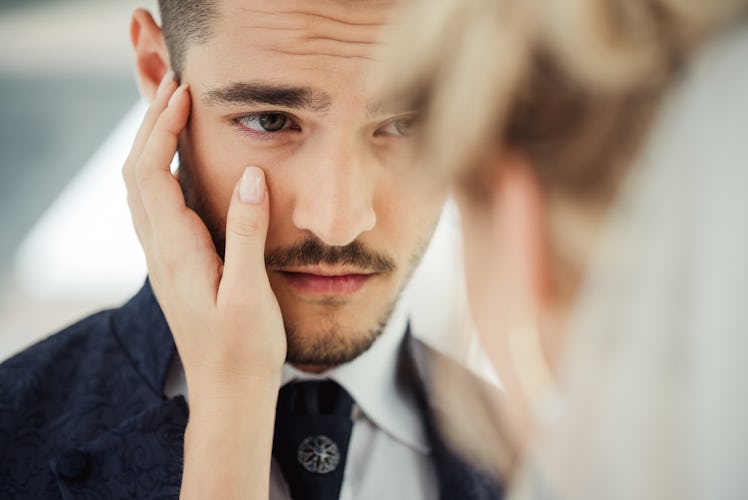Why Do We Cry Tears Of Joy? Science Explains.
It may have something to do with comfort.

Whether it was on your wedding day, at the birth of your child, or when your team won the Super Bowl, you have probably cried tears of joy at some point. And that’s normal — our faces frequently seem at odds with our feelings (like that look of pain when you eat something delicious or see something cute). “People can have negative expressions, but feel positive feelings,” psychologist Oriana R. Aragón, Ph.D., who studies emotion regulation and facial expressions, told Fatherly.
Through multiple studies, Aragón and others have tracked how our facial expressions correspond to our emotions. Although researchers once suspected that tears of joy come about because of latent feelings of sadness, hopelessness, or loss, Aragón, who first empirically tested happy tears in 2015, disagrees. “We found that on explicit and implicit measures of how people are feeling, that people can cry even when they do indeed report predominantly positive feelings, not negative feelings.”
Subsequent studies have confirmed that you don’t need to be a new parent or an intoxicated sports fan to cry even when you feel happy — you just have to have feelings, and a face.
If we don’t cry happy tears because we’re sad deep down, why do we do it? The short answer, Aragón says, is that crying intensifies life’s happiest moments. Our tears release neurotransmitters known as leucine enkephalin, which can act as a natural painkiller. When people cry because they’re sad, this makes them feel better. But when people cry because they’re happy, that same neurotransmitter makes them feel that much happier. In other words, tears encourage catharsis.
A more complex explanation for tears of joy involves the theory that our brains don’t always know the difference between positive and negative emotions. The hypothalamus, an almond-sized part of the limbic system, responds to emotions through strong neural signals from the amygdala, which cannot always discern the difference between happy and sad signals, Jordan Gaines Lewis, a professor of psychiatry at Pennsylvania State University, wrote on Psychology Today. When happy and sad signals get their wires crossed, this activates the parasympathetic nervous system, which helps us calm down after trauma and releases the neurotransmitter acetylcholine. Acetylcholine tells our tear ducts to get busy. So we cry.
In a 2009 study in the journal Evolutionary Psychology, Oren Hasson took a novel approach. He proposed that crying is a social cue that broadly means: “don’t attack me, consider appeasing me, I’m in need of close friends right now, I’m certainly not going to harm you.” Crying, then, makes sense for both sad and happy situations — biology’s way of tearing down barriers and facilitating bonding.
Children are just as likely to cry happy tears as adults, Aragón says, and men are just as likely as women to cry tears of joy. “We have found that both men and women cry happy tears,” she says.
Interestingly, Aragón’s most recent study indicates that people are more likely to comfort than celebrate someone else’s happy tears. And, perhaps on some level, that’s what we want. Whether it’s our wedding day, the birth of our kid, or the day our team wins, we don’t want yet another person looking for a party forcing their way into our celebration. We want solace and, then solitude. In some instances, you might need it so badly you cry about it. (Especially if you’re a Patriots fan.)
This article was originally published on